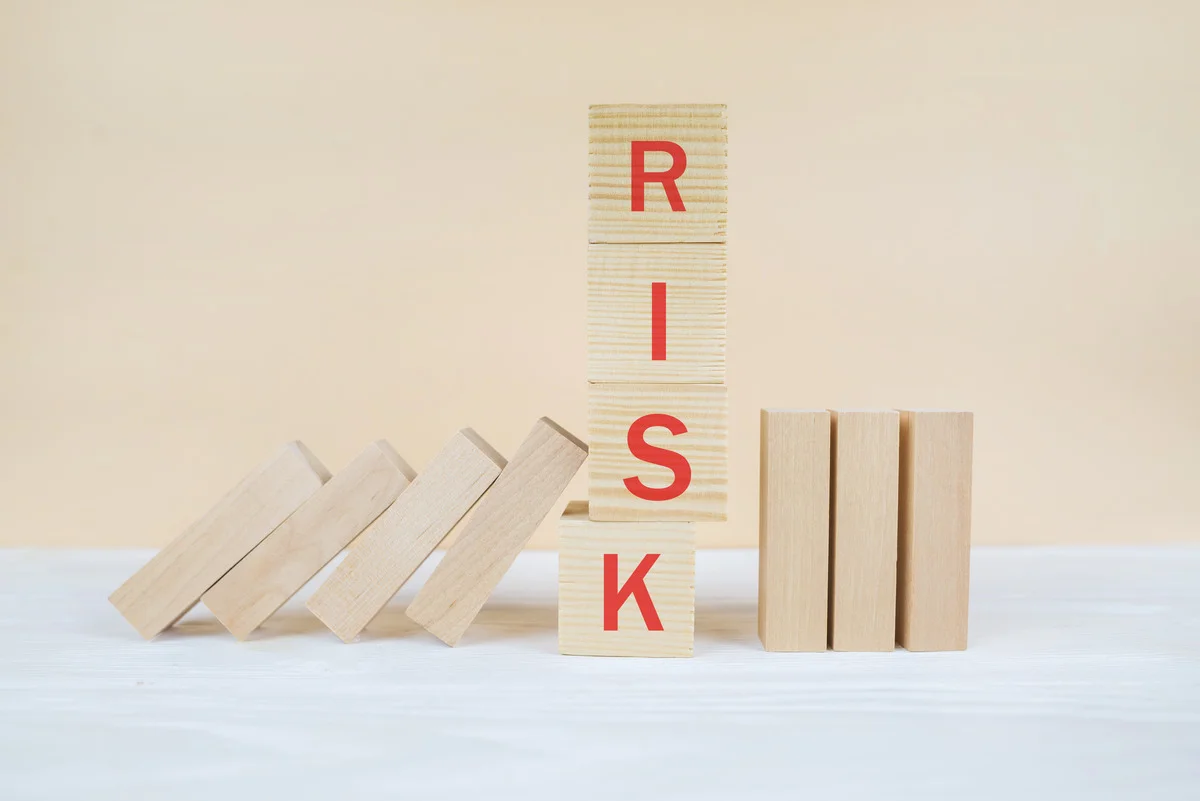In the current digital landscape, a small business cyber security guide is becoming more useful than years ago. Why is cyber security becoming important? Let’s look at the data.
The press release for the 2023 BlackFog study offers a surprising reality: 61% of small and medium-sized businesses (SMBs) were affected by a successful cyber attack in 2022.
Even more concerning, according to the Coveware 2022 Quarterly Report, 82% of ransomware attacks targeted companies with fewer than 1,000 employees, indicating a strategic shift by cybercriminals toward smaller, more vulnerable targets.
The Identity Theft Resource Center’s 2023 Business Impact Report reveals that 73% of small business owners reported experiencing a data breach or cyberattack in the past year, marking a significant increase in incidents.
Despite this alarming increase in cyber threats, many small business owners remain confident in their ability to defend against and recover from these incidents.
However, this confidence may only partially align with the reality of such breaches’ risks and potential financial impact.
The US Small Business Administration reveals the aftermath of cyberattacks on SMBs can be devastating. In 2020, over 700,000 attacks against small businesses amounted to $2.8 billion in damages.
Right now, small businesses must prioritise cybersecurity and understand the evolving nature of cyber threats.
While digital transformation offers numerous benefits, it also brings heightened risks that must be managed with effective cybersecurity strategies.
Given the circumstances, let’s talk about the cyber security guide for small businesses.
Current Cyber Threat Landscape
The current cyber threat landscape in 2024 presents unique challenges for small businesses, marked by an evolution in the nature and sophistication of cyber threats.
One significant trend is the rise of AI-powered attacks. The use of artificial intelligence and machine learning by cybercriminals has led to more complex and adaptable cyberattacks, posing a considerable challenge to traditional security measures, which may struggle to keep up with these AI-driven threats.
Another worrying trend is the escalation of ransomware attacks, now often involving double-extortion tactics. These ransomware attacks are becoming more and more common in SMB’s websites.
Cybercriminals encrypt victim data and threaten to release sensitive information if their demands are unmet. This evolution makes ransomware a more severe tool for extortion.
Supply chain vulnerabilities have also emerged as a new battleground. The interconnected nature of global supply chains has made them a target for cyberattacks, potentially causing significant operational disruptions and security breaches.
The proliferation of IoT devices introduces numerous vulnerabilities. Often lacking robust built-in security, these devices can act as entry points for cybercriminals to access broader network systems.
Advancements in quantum computing pose a risk to traditional encryption methods, necessitating a shift to quantum-resistant encryption methods to secure data against these next-generation computing capabilities.
In addition, nation-state cyberattacks and hacktivism, especially around significant events like U.S. presidential elections, have increased. These threats include spear phishing targeting electoral systems and voters.
Therefore, small businesses should focus on comprehensive cybersecurity strategies, regular risk assessments, cybersecurity investments, and staying updated with regulatory compliance.
This approach is crucial for protecting digital assets and maintaining trust in the digital economy. Why?
The Cybercrime Magazine and eSentire, according to Steve Morgan, Editor-in-Chief, predict that cybercrime will cost the world $9.5 trillion in 2024.
This cybersecurity venture also predicts the global cost of cybercrime will grow by 15 percent per year over the next two years, reaching $10.5 trillion annually by 2025, up from $3 trillion in 2015.
Yes, the number is huge. Consequently, you need the best practices below.
Key Cyber Security Practices
Given the evolving nature of cyber threats, small businesses must adopt a proactive and comprehensive approach to cyber security, continually adapting and investing in the right technologies and best practices to protect their digital assets.
So, here are a few key cyber security best practices based on recent trends:
- Detection and response: Small businesses must establish mechanisms for promptly detecting cybersecurity events. This can involve deploying advanced threat detection tools and conducting regular security assessments. An effective incident response plan is also essential, outlining steps for communication, coordination, and business continuity in a cyber incident.
- Role-Based Access Control (RBAC): Implementing RBAC helps control who has access to various data, ensuring that employees only access necessary information for their roles, thereby reducing the risk of data theft.
- Automated backup and data recovery: Protecting data through automated remote backup and recovery solutions is critical. These systems safeguard data from cyberattacks and facilitate data restoration in case of breaches.
- Multi-Factor Authentication (MFA): Using MFA adds a layer of security beyond just usernames and passwords, making it significantly harder for cybercriminals to gain unauthorised access to data and systems.
- Wi-Fi network security: Securing Wi-Fi networks is essential. This includes using strong encryption, hiding network SSIDs, and regularly changing passwords to prevent unauthorised access.
- Employee training and awareness: Training employees in cyber security best practices is vital. This includes recognizing phishing attempts, using strong passwords, and reporting incidents promptly.
- Adopting the Zero Trust Model: The Zero Trust model operates on the principle of “never trust, always verify.” This approach can significantly minimise the risk of unauthorised access and data breaches.
- AI and ML in threat detection: Leveraging AI and ML can help analyse vast amounts of data to identify anomalies and potential threats, enhancing the security posture of a business.
- Cloud security: As cloud adoption rises, it’s important to prioritise cloud security. This involves choosing reputable cloud service providers, implementing proper access controls, and encrypting data.
- Regulatory compliance: Staying up-to-date with regulations like GDPR (General Data Protection Regulation) or HIPAA (Health Insurance Portability and Accountability Act) and ensuring compliance is becoming increasingly important for businesses.
- Collaboration and threat intelligence sharing: Sharing threat intelligence within industry associations or with other enterprises can offer valuable insights into emerging threats and effective defence strategies.
- Security budgets: Allocating a sufficient budget for cyber security initiatives is crucial, ensuring funds are used efficiently and allocated to critical security areas.
Essential Cyber Security Tools
These tools cater to different aspects of cybersecurity, from network monitoring and endpoint protection to identity management and cloud security, providing a well-rounded approach to protecting a small business’s digital assets.
1. Wireshark
This open-source network protocol analyzer is invaluable for network troubleshooting and analysis.
Wireshark allows for deep packet inspection, offering insights into network traffic and enabling the detection of anomalies and malicious activity.
Wireshark’s user-friendly GUI and powerful filtering and search capabilities make it an excellent choice for businesses wanting to understand and secure their network.
2. Fortinet SIEM
Fortinet’s SIEM solution, which offers analytics and threat intelligence crucial for identifying security incidents, is ideal for advanced threat detection.
It’s designed for compliance management and supports essential standards, making it suitable for businesses that adhere to regulatory requirements. Key features include real-time security analytics and deep fabric integration.
3. VMware Carbon Black Cloud
This platform provides comprehensive malware protection using advanced behavioral analytics and threat intelligence.
It’s cloud-native, offering scalability and flexibility, making it suitable for businesses of varying sizes. Key features include endpoint protection, automated response and remediation, and cloud-native architecture.
4. CyberArk
Specialising in identity and privileged access management, CyberArk offers robust authentication for users and remote connections.
It’s particularly useful for businesses with compliance requirements, providing secure access management for sensitive corporate information. Key features include adaptive multi-factor authentication and secure audit report generation.
5. Cisco Umbrella
A cloud-based cyber security platform, Cisco Umbrella combines various security functions into one solution.
It’s particularly effective for extending data protection capabilities to remote users and devices. Key features include a user-friendly interface and comprehensive security management capabilities.
Data Protection and Privacy Compliance
By the end of 2024, privacy regulations are estimated to cover three-quarters of the global population, with a notable focus on the EU, US, Canada, and Australia.
States like Delaware have enacted data privacy acts in the US, and there’s a growing anticipation for a broader federal data privacy law.
Canada is progressing with Bill C-27, potentially replacing the PIPEDA regulation with the Consumer Privacy Protection Act (CPPA). Australia is also looking to overhaul its Privacy Act.
In the EU, the ePrivacy Regulation (ePR) is expected to establish clearer rules on cookie usage and regulate newer electronic communications services.
Moreover, integrating AI into data privacy poses new challenges, especially regarding transparency and ethical considerations.
The European Union’s AI Act is anticipated to set guidelines and prohibitions around the development and application of AI, likely influencing similar laws in other countries. The US is also focusing on safer AI practices.
So, yes, we expect to see increased scrutiny of cyber security practices. This includes a stronger focus on preventative measures, responding to incidents, and complying with privacy regulations.
In order to ensure compliance and adopt best practices, SMBs should focus on the following areas:
- Regularly updating their data protection policies in line with evolving regulations.
- Implementing modern security solutions to protect sensitive data.
- Embracing transparency and ethical AI practices.
- Investing in continuous employee training on data privacy and security.
- Conducting thorough risk assessments and ensuring a robust incident response plan.
Incident Response Plan
An IRP is a formal, step-by-step guide for responding to a cyber incident to minimise damage and quickly restore normal operations.
The importance of such a plan must be considered, as a quick and efficient response can significantly reduce downtime, loss of revenue, and damage to reputation. Here’s a streamlined guide to creating an IRP:
- Preparation: This involves assessing risks and identifying potential threats. A thorough risk assessment, identification of critical assets, and defining roles and responsibilities of the incident response team are key steps.
- Detection and Analysis: Constant monitoring of systems for signs of incidents is essential, along with analysing the scope and severity once detected.
- Containment, eradication, and recovery: This phase includes isolating affected systems, removing the incident’s root cause, and restoring normal operations while preventing future incidents.
- Post-incident analysis: Conduct a detailed review of the incident, document lessons learned, and identify improvements to the IRP for future preparedness.
Regular drills and updates are another vital consideration. Testing the IRP through tabletop exercises ensures effectiveness and keeps the response team prepared.
These exercises should be realistic and involve all relevant stakeholders, focusing on refining procedures and improving communication.

Vendor and Third-Party Risk Management
Vendor and Third-Party Risk Management (TPRM) in 2024 has evolved into a more comprehensive and strategic practice.
The essence of TPRM now lies in integrating multiple internal teams, transforming it into a lifecycle management process.
The days of working in silos are fading away. Instead, a holistic view is embraced, where the connections between vendors and various organisational departments are mapped out.
This integrated approach brings a broader understanding of each vendor’s impact and ensures standardised organisational procedures.
Businesses are becoming more proactive, mitigating potential problems before they escalate.
Adjusting the onboarding process based on risk profiles allows for a more efficient allocation of resources.
High-risk vendors receive the attention they deserve, ensuring that potential issues are identified and addressed quickly.
Another critical aspect is the convergence of silos of third-party risk data into a single source of truth.
With multiple teams involved, the goal is to unify a range of IT and non-IT risks into centralized vendor profiles, eliminating data stranded across the enterprise.
Predictive analytics and AI also play a critical role in improving the quality of TPRM programs.
Utilising a unified risk model that is continuously updated enables organisations to perform more advanced and predictive analytics.
This helps to allocate resources better and improve operational decision-making throughout the vendor-supplier relationship.
Certainly, the focus is not just on managing risk but on managing the entire vendor relationship and understanding the unique risks and opportunities at each stage.
This means thoroughly vetting vendors and continuously monitoring and reevaluating these relationships for small businesses.
Employee Training and Awareness
Employee training and awareness are crucial components of a comprehensive cyber security strategy for small businesses.
We know human error is at the root of many corporate data breaches. Simultaneously, employees often serve as the first defence against cyber threats.
Their ability to recognize and respond to security incidents can significantly reduce the risk of a breach.
So, here are some fundamental and effective employee training that should be included in small and medium-sized businesses:
- Regular training sessions: Cyber threats evolve rapidly, so training should be ongoing, not a one-time event. Regular sessions ensure employees stay updated on the latest threats and safe practices.
- Realistic simulations: Including simulations of phishing attacks or breach scenarios in training helps employees understand the practical implications of cyber threats and learn how to respond effectively.
- Creating a security culture: Training should aim to create a culture of security where employees understand the importance of their role in keeping the business safe and are motivated to follow best practices.
- Clear communication of policies: Employees should be made aware of the organisation’s cybersecurity policies, including acceptable use policies for technology resources, data handling procedures, and reporting protocols for suspected incidents.
- Use multiple training methods: A mix of training methods, such as workshops, e-learning modules, and newsletters, can cater to different learning styles and keep training engaging.
How To Set Up Cyber Security for Small Business?
Setting up cyber security for a small business involves a blend of technological implementation, strategic planning, employee training, and continuous monitoring and updating to adapt to the ever-changing cyber threat landscape.
Firstly, it’s crucial to establish robust detection mechanisms. This involves implementing advanced threat detection tools like intrusion detection systems and regularly monitoring network logs for unusual activities.
Conducting regular security assessments and penetration testing is vital to discover and address vulnerabilities proactively.
Developing a well-structured incident response plan is equally important. This plan should detail the steps to be taken in the event of a cybersecurity incident, including protocols for communication, coordination with law enforcement, and strategies for business continuity.
A designated, well-trained incident response team is essential for handling cyber incidents effectively.
Another key aspect is implementing a comprehensive recovery plan. This includes measures for restoring systems and data post-incident, analysing the incident to glean lessons, and updating security measures to prevent future occurrences.
Regularly updated and automated backups of critical data and systems are fundamental for quick and effective recovery.
Engaging responsibly with third-party vendors is also vital. Ensure their cybersecurity practices align with your standards, including the inclusion of cybersecurity clauses in vendor contracts. Conduct regular cyber security audits to verify their adherence to these standards.
In terms of budgeting, it’s about spending smartly and effectively rather than just more. Prioritise investment in key areas like strong security software, staff training, and expert consultations.
Remember, the cost of ignoring cyber security can lead to financial losses, harm to reputation, and legal consequences.
Finally, secure your network with firewalls, encryption, and intrusion detection systems. Implementing these measures and a Virtual Private Network (VPN) for remote employees creates a robust defence against cyber threats.
Regular security audits and updates ensure that your cyber security measures stay effective against evolving cyber threats.
How Can Nexa Lab Help Your Cyber Security Setup?
We at Nexa Lab are passionate about empowering small businesses in Australia with top-notch cyber security solutions.
Utilising Nexa Lab service means having a partner who understands the intricacies of web and app development and prioritises your cyber security needs.
With Nexa Lab, you’re not just getting software solutions; you’re ensuring your digital assets are robustly protected against the latest cyber threats.
How could this security assurance impact your business growth? Our services span web and app development to data visualisation and SharePoint programming, all tailored to strengthen your digital foundation.
Why not explore how Nexa Lab can be pivotal to your business’s success story? Visit our website for more insights on enhancing your technological capabilities.
Conclusion
Small businesses face unique challenges as cyber threats become more sophisticated and targeted.
We underscore this reality by revealing how cyberattacks have impacted many small and medium-sized businesses (SMBs).
Moreover, the escalation of AI-powered attacks and supply chain vulnerabilities further complicates the landscape, making it imperative for small businesses to adopt comprehensive cyber security strategies.
To effectively address these challenges, small businesses must prioritise cybersecurity as a key component of their operational strategy.
So, now is the time for small businesses to understand and optimise their cybersecurity measures to meet these challenges head-on, protect their digital assets, and maintain trust in the digital economy.




